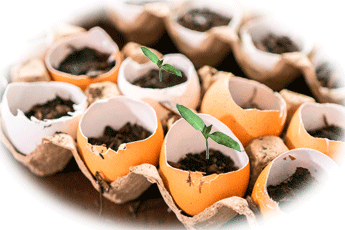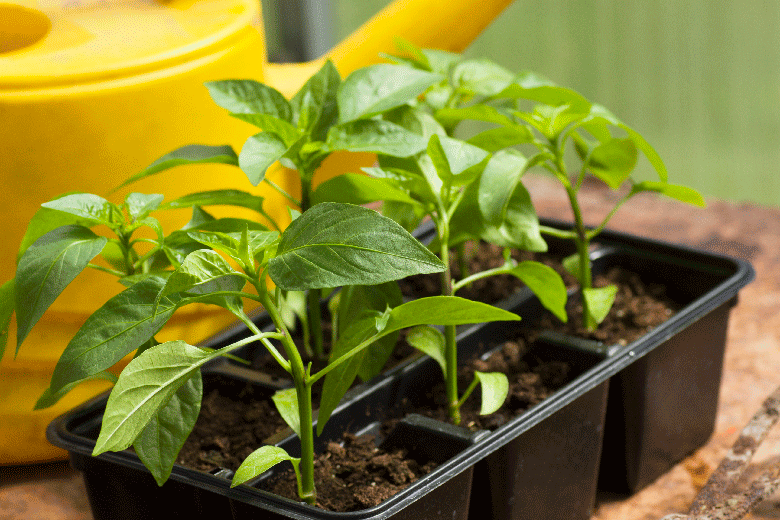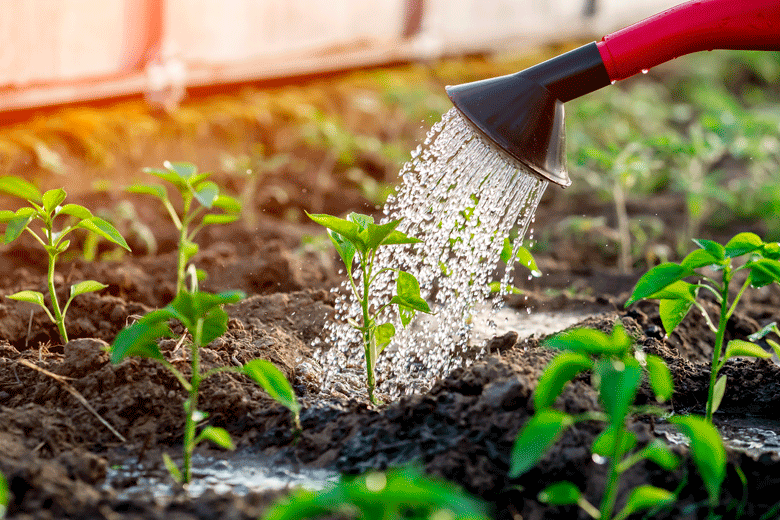Some background
One of the biggest lessons Chilli growers need to learn concerns watering. I have been growing Chillies for many years, and still constantly make mistakes in this area. While not so serious when Chiili plants are established, getting watering wrong when they are still seedlings, can lead to disaster. Overwatering can lead to diseases, and under-watering to other complications
I recently noticed that leaves on a couple of my Chilli seedlings were turning yellow. I concluded this had happened because the seedlings hadn’t been properly watered. First, they had been overwatered. To fix that, I let the soil dry out. But then I went to the other extreme. I allowed the soil to dry out too much. The seedlings started wilting and needed to be given water to revive them. The seedlings protested to being put under so much stress, and their leaves turned partially yellow.
With this event and the other problem I faced earlier in the year with overwatering, I decided it was time to find the best ways ensure that seedlings are properly watered. This is certainly something I need to master, as it is a recurring problem. I have already made some headway with some new methods and will be trying out some other ideas in not too distant future
Tried and tested

Egg shells are a winner
One method I am already having success with is seed starting. In this method, I use eggshells that I fill with a seed starting compost. These eggshells are then placed into egg trays partially filled with vermiculite. The egg trays are placed on a capillary mat in a self-watering propagator. The results are impressive. The vermiculite acts like a sponge and sucks up water from the capillary matting. The potting soil in the eggshells absorbs moisture from the wet vermiculite. The result is that the soil remains only moist, which is ideal for germinating seedlings.

What’s more, I have taken the method a step further. Once the seeds have germinated, I immediately take them out of the propagator and place them into another egg tray (prepared in the same way with vermiculite) under grow lights. The only difference is that the egg tray is placed in a seed tray on top of capillary matting. I could eliminate using the capillary matting, but for me, it serves two purposes. Not only does it provide a wet surface for the egg tray to absorb moisture from, but it also acts as an early warning system. If the matting starts becoming dry, it means the seedlings need more water.
These propagators are effective in keeping seeds moist while they germinate, but that’s not where it ends. They can also be used to house seedlings once they have germinated. Once the seeds have sprouted, the lid of the propagator can be removed and the propagator placed as it is under the grow lights. The capillary matting on the platform above the water reservoir in the propagator keeps the seedlings moist for up to two weeks
Still to be tried

Aquameters and others
Another method I recently came across and will soon be trying out is a probe called an Aquameter. These are probes that you place in the soil, they register moisture level with an indicator. When the indictor is blue, it means the soil is adequately moist. As the soil dries out, the indicator changes colour to white.
Aquameters can be kept permanently in pots. There is no risk of corrosion, as there is in other moisture testers, because its body is made of polycarbonate. So, all that is required is to keep an eye on what the probe is telling you. When it registers that that soil in the pot is becoming dry, it’s time to add water.
These are great little devices, but be warned, they cost a bob or two to set up. To set up my plants with this type of system would cost just under two hundred pounds. I am not sure I will do that with all my plants! Maybe just a few of the special ones
Failing using one of the methods covered, it will boil down to having a set routine to check plants daily using physical inspection. The conventional wisdom in growing Chillies is that they don’t like too much water. It’s better to keep Chillies on the dry side, rather than giving them too much water. I would even say that you should allow the soil at the top of pots to dry out before watering your plants. The only problem is that we have no way to check how dry the soil is below the surface. You can get an indication just using your fingers by pressing down on the potting soil. Doing so can become messy, and it is not the accurate way to check moisture levels.
To circumvent this, you could use toothpicks to gauge how wet the soil is below the dry surface. All that is needed is stick a toothpick into the soil and leave it for five minutes. After that, take the toothpick out. You will see from any discolouration on the stick whether the soil is moist or not.
The final method involves judgement from the weight of pots, whether the soil is wet or not. It will take a while to get used to doing it, but after time, you will be able to judge whether the soil is moist or not by simply lifting the pots. The heavier the pot, the more moisture it has, and vice versa
Finally
One important consideration when it comes to watering seedlings is that they should not be watered from the top. Doing this will make the top of the soil wet and invite pests like fungus gnats to lay their eggs in the soil. It is far better to water seedlings by pouring water into seed trays and letting the medium the seedlings are planted in absorb water from the bottom
The final method I could use would be to forget about bottom watering altogether. All the methods discussed involved water being poured into a tray below the pots. I could simply use a mist sprayer and spray the seedlings daily with lukewarm water. This is an effective way to solve watering problems. You, however, need to be on top of your game when you do this. It must be done every day. You can’t forget or go away for a few days. I am not sure that works for me.



